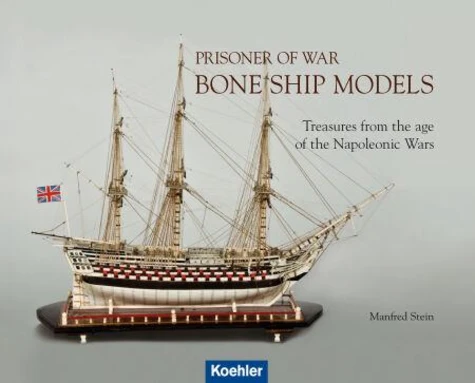Prisoner of War - Bone Ship Models. Treasures from the Age of the Napoleonic Wars
Par :Formats :
Disponible dans votre compte client Decitre ou Furet du Nord dès validation de votre commande. Le format ePub est :
- Compatible avec une lecture sur My Vivlio (smartphone, tablette, ordinateur)
- Compatible avec une lecture sur liseuses Vivlio
- Pour les liseuses autres que Vivlio, vous devez utiliser le logiciel Adobe Digital Edition. Non compatible avec la lecture sur les liseuses Kindle, Remarkable et Sony
 , qui est-ce ?
, qui est-ce ?Notre partenaire de plateforme de lecture numérique où vous retrouverez l'ensemble de vos ebooks gratuitement
Pour en savoir plus sur nos ebooks, consultez notre aide en ligne ici
- Nombre de pages408
- FormatePub
- ISBN978-3-7822-1461-2
- EAN9783782214612
- Date de parution02/11/2015
- Protection num.pas de protection
- Taille52 Mo
- Infos supplémentairesepub
- ÉditeurKoehlers Verlagsgesellschaft
Résumé
During 1792-1815, the period of the Coalition Wars and the Napoleonic Wars between France and Europe, prisoners were taken on both sides. The majority of them were confined, sometimes for many years, in England and Scotland. Some of the prisoners built ship models from scraps of wood or mutton and beef bones. Rigging was made of silk or whatever other fine material could be obtained. The prisoners developed an art form and the models were sold to the public through the guards.
This trade enabled the prisoner to acquire ivory and special tools to make the models all the more decorative. The remain highly sought after and valuable collectors' items to this day. This book shows the beauty of the models selected as the finest in the Peter Tamm Collection in the International Maritime Museum of Hamburg.
This trade enabled the prisoner to acquire ivory and special tools to make the models all the more decorative. The remain highly sought after and valuable collectors' items to this day. This book shows the beauty of the models selected as the finest in the Peter Tamm Collection in the International Maritime Museum of Hamburg.
During 1792-1815, the period of the Coalition Wars and the Napoleonic Wars between France and Europe, prisoners were taken on both sides. The majority of them were confined, sometimes for many years, in England and Scotland. Some of the prisoners built ship models from scraps of wood or mutton and beef bones. Rigging was made of silk or whatever other fine material could be obtained. The prisoners developed an art form and the models were sold to the public through the guards.
This trade enabled the prisoner to acquire ivory and special tools to make the models all the more decorative. The remain highly sought after and valuable collectors' items to this day. This book shows the beauty of the models selected as the finest in the Peter Tamm Collection in the International Maritime Museum of Hamburg.
This trade enabled the prisoner to acquire ivory and special tools to make the models all the more decorative. The remain highly sought after and valuable collectors' items to this day. This book shows the beauty of the models selected as the finest in the Peter Tamm Collection in the International Maritime Museum of Hamburg.



